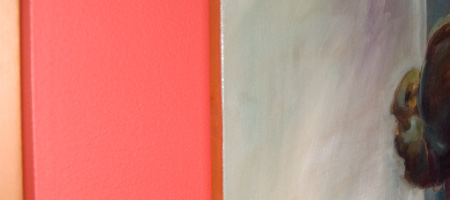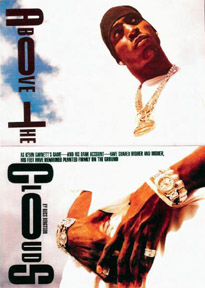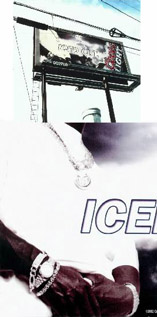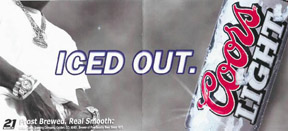
Legalities 27: Comping and Infringement
Q. I am a freelance graphic designer and I am struggling with ad agency clients who wish me to use copyrighted images from other companies as parts of their conceptual marketing layouts without permission. I know this is illegal and have told my client such. They wish to proceed anyway and take responsibility for this action. If I have this in writing, does that protect me if I do the work as they want it?
A. “Comping” refers to the use of a photograph or illustration in a comprehensive layout for a new project, which is shown to a designer’s client in order to suggest the proposed direction for the new work. Although this is common practice in our industry, you are correct that reproducing an image for such comping without permission is illegal. Under copyright law, any person or entity involved in the unauthorized use of a copyrighted work, from the initial copying through publication and distribution, is liable for infringement. The only exceptions are for fair use. (See Legalities 5 and 6 for a thorough discussion of fair use.)
For a use to qualify as “fair use,” it must survive a multi-factor balancing test:
- the purpose and character of the use, including whether you’ve made a new transformative work, and whether your use is commercial
- the nature of the original work, such as whether it is highly factual or imaginative
- how much of the original work was used
- whether the new use affects the potential market for the original work
Many designers believe that comping is legally acceptable, but this is incorrect. When the four factors are evaluated, courts have consistently determined that comping does not qualify as fair use:
- Comping is a commercial use of the image – it uses the image to promote the designer’s business. This is deemed to be the case even if the image is cropped or distorted.
- Comping uses highly creative original works of art, which receive the strongest protection.
- Comping uses the entire image or a significant amount of the original. Again, this is deemed to be the case even if the image is cropped or distorted.
- Comping directly affects the potential licensing market for the original image, that is, the artist’s right to grant or deny permission, and to charge a license fee for comping.
Comping is a dangerous practice, especially if another artist is selected to do the final work. The comp is what the client sees and approves. As a natural consequence of comping, the final artist must necessarily emulate the comp. It is very likely that the final artwork will be “substantially similar” to the comped image, and thus vulnerable to a copyright infringement claim. If the original artist is commissioned for the final work, she will generally forgive the unauthorized comping. However, if another artist receives the assignment, the situation is ripe for a lawsuit for multiple counts of copyright infringement.
An exemplary case from over fifteen years ago is Curtis v. General Dynamics Corporation (W.D.Wash. 1990). In 1982, the plaintiff Melvin Curtis had created a dramatic photograph of an empty wheelchair on his porch while he was a student at Ohio University. He published the photo, entitled “Wheelchair on a Porch in Athens, Ohio,” in self-promotional materials. In 1985, it was selected for inclusion in the Communication Arts Photography Annual, along with three other of Curtis’ photos.
Meanwhile, General Dynamics, which was involved in defense procurement controversies, decided to do some corporate advertising to improve its image. Wyse Advertising competed with three other advertising agencies for the project. One of Wyse’s ideas was a “subordinate values” campaign to associate General Dynamics with universally held values such as education and patriotism. As part of that campaign, Wyse presented a rough layout about President Franklin Delano Roosevelt, showing a drawing of an empty wheelchair with the headline “His legs were crippled, but he carried the weight of the free world on his shoulders.” Wyse won the account based on that layout.
Thereafter Wyse looked for photographs of wheelchairs to use for the final comp for this piece. Wyse found Curtis’s photo in Communication Arts. Wyse photocopied the photograph, and used a cropped version of it for the next comp of the Roosevelt ad. The comp was approved, and Wyse sought bids for the final photography. Curtis submitted a bid. However, Wyse selected another photographer, Martin Reuben, to do the final shoot. Predictably, Rueben’s final photos were very similar to the comped copy of Curtis’s photo. They showed a similar wheelchair on a similar porch, with the same lighting, composition and viewpoint. Curtis sued for copyright infringement.
The court held that the comping and the final photographs were two separate infringements of Curtis’s copyright. He was awarded $2,750.00 in actual damages (the fee Curtis would have charged had he been given the final assignment), $57,358.00 for Wyse’s net revenue earned from the project, and his attorneys’ fees, as well as an injunction and recall of the infringing ads.
A currently pending case, Mannion v. Coors Brewing Company, 377 F.Supp.2d 444 (S.D.N.Y. 2005), involves a similar situation, only this time the comping was done with the original photographer’s permission. Photographer Jonathan Mannion had taken a photo of NBA player Kevin Garnett for the basketball magazine Slam. Mannion posed Garnett and took the photo from below, so that the viewpoint is up and across Garnett’s body, as if he is towering above. The photo highlights Garnett’s hands crossed over his belly, and his abundant jewelry (as the court stated, commonly known as “bling-bling” or “ice”).
The ad agency for Coors, Carol H. Williams Advertising, got permission from Mannion’s rep to use the photo in a comp for a Coors billboard they called “Iced Out.” On one side, the comp used a cropped and manipulated mirror image of Mannion’s photo showing Garnett’s torso, hands and bling-bling. A can of Coors Light was on the other side. Coors approved the “Iced Out” comp, and the ad agency solicited bids for the final photography. Again, Mannion submitted a bid, but was not selected. The final photo created for the billboard imitated the pose, clothing, bling-bling, and viewpoint of Mannion’s original photo. Mannion sued for copyright infringement after he saw the final billboards on display in Los Angeles. The defendants attempted to get the case thrown out on summary judgment, but the court refused. The court held that there are enough similarities in artistic expression to allow a jury to find that the Coors billboard photo infringed Mannion’s copyright.


1-The Garnett Photograph 3- The Coors Billboard and detail

2- The Iced Out Comp Board
While these two examples happen to involve photographs, the same rules apply for illustrations. Reproducing artwork for a comp without permission is automatically infringement. Having another artist imitate the comped artwork may also be infringement, depending upon how closely the second work imitates the first. The test will be “substantial similarity of artistic expression.” See Legalities # 25 for more about “substantial similarity.”
As noted above, every person and entity involved in the copying, publication, and distribution of a copyrighted work is liable for infringement. That’s why, in the cases discussed above, General Dynamics and Coors were sued along with their advertising agencies. In your situation, you would also be liable as the independent contractor participating in creating the comp. (In contrast, employees of a design agency would not be individually liable – their conduct is attributed to their employer). So you are correct, you need the agency to indemnify you against any infringement claims. Without such indemnification, you are at risk of being named for willful infringement in a copyright lawsuit. While most plaintiffs go after the advertising agency and their ultimate clients, such as General Dynamics or Coors, they are also entitled to recover damages from the individual who actually created the infringing comp.
The best way to be protected is to have a written agreement stating that in exchange for your agreement follow their instructions, the ad agency will indemnify you against any claims of infringement. The agreement should also state that the agency has sufficient insurance to defend an infringement claim, and you will be an additional named insured. Here is some sample language:
Warranties and Indemnification: Agency hereby warrants that any materials or creative authorship provided by Agency or which Agency instructs Designer to include in the work product shall be original to Agency, or are in the public domain, or are used under permission from the respective copyright or other intellectual property rights holders, and shall not infringe the copyright, trade dress, patent, trade secret, or other property rights of any third party. Agency shall defend, indemnify, and hold harmless Designer from any damages, costs, expenses, and attorneys’ fees, incurred by reason of any breach of Agency’s warranties provided herein; or any acts or omissions of Agency, its agents, contractors, or employees, arising out of this Agreement. If any action or proceeding is brought against Designer by reason of any such claim, Agency (upon notice by Designer) shall defend the same at Agency’s expense by counsel reasonably acceptable to Designer.
Insurance. Agency shall maintain, during the period of this Agreement, at its expense, product liability, general business liability, and advertising injury insurance from a recognized insurance carrier in the amount of at least five million dollars ($5,000,000.00) per occurrence. Such insurance shall name Designer individually as an additional named insured. Agency shall provide a copy of said insurance policy to Designer at Designer’s request.
Editor’s Note: The Graphic Artists Guild endorses a policy called “Ask First”, stating that comping of artwork should only be done with the creator’s permission.
– – – – –
You are invited to submit questions for upcoming Legalities columns. Please send your questions to legalities@owe.com.
– – – – –
Legalities is a service mark of Linda Joy Kattwinkel. © 2006 Linda Joy Kattwinkel. . All Rights Reserved. The information in this column is provided to help you become familiar with legal issues that may affect graphic artists. Legal advice must be tailored to the specific circumstances of each case, and nothing provided here should be used as a substitute for advice of legal counsel. Linda Joy Kattwinkel is an attorney, painter and former graphic artist/illustrator. She practices intellectual property law, arts law and mediation for artists in San Francisco. She can be reached at 415-882-3200 or ljk@owe.com .
See the index of previous columns for more answers to your questions.